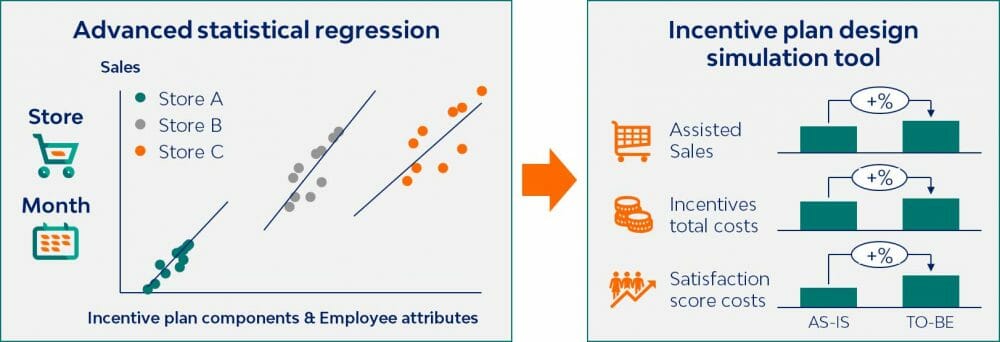With increasingly demanding customers and a growing omnichannel trend, sales force teams face new challenges, performing a crucial role in the overall performance of retail companies. Having an incentive plan defined years before and lacking analytical background, the challenge was to support our customers performing an end-to-end plan revamping.
The plan possessed innumerous components, ranging from individual to collective, quantitative, and qualitative. However, there was little visibility about the impact of each component in the sales force team behavior and performance.
The present case study aims at demonstrating how analytics can help to leverage incentives for thousands of sales employees.
To design an optimal sales incentives plan, it is necessary to understand how each plan component influences not only sales but also customer satisfaction, a crucial driver on the retailer’s performance.
An advanced statistical regression model was created, unveiling strong relationships between the different incentive plan components (individual/collective, quantitative/qualitative, etc.), the employees’ attributes (tenure, training, etc.), and the retailer’s main results.
Subsequently, using the core results and coefficients from the previous model, a simulation tool was developed, allowing the retailer’s team to acknowledge and foresee the impact of distinct potential plans in sales increase and expected overall costs (total incentives costs, satisfaction score costs, etc.).

The retailer’s sales incentives plan was thoroughly redefined through the elimination of ineffective components, calibration of others, or the addition of new elements, thus addressing new dimensions, such as customer satisfaction and omnichannel sales.
The project gave our customer a clearer view of the importance of incentives, thus leading to an expected reinforcement of the current investment by 25%, with a corresponding increase of 1.5% in revenue, and an up to 35% decrease in employee turnover.
The delivered methodology and simulation tool allow the retailer’s team to quickly iterate on future adjustments, thus understanding the end-to-end impacts of the proposed changes.
By: Vasco Patarata